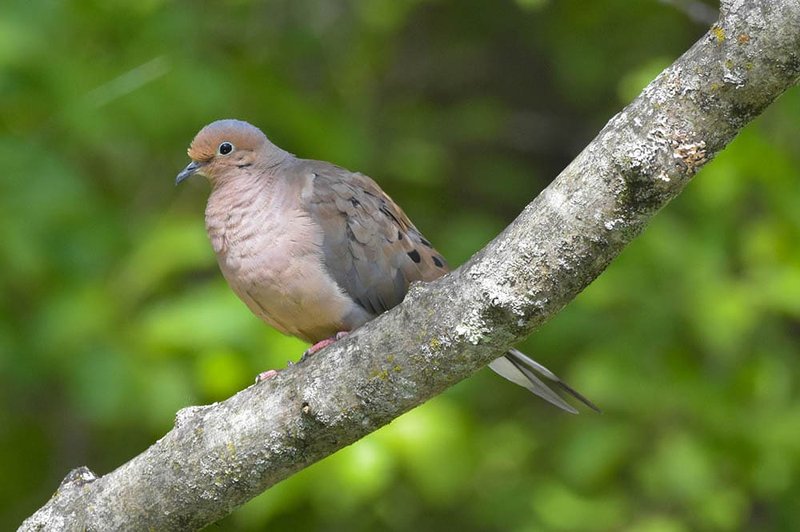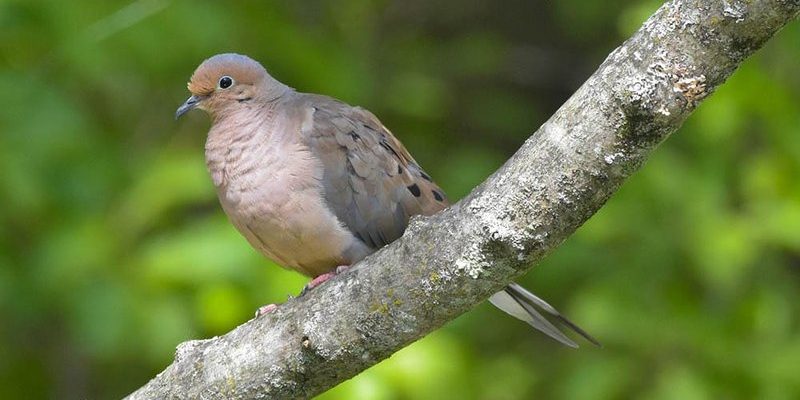
Mourning doves are incredibly adaptable, which is why they flourish in various environments. Picture them as the “everyman” of the bird world, making themselves at home in almost any nook and cranny. So, if you’re curious about where to find these lovely doves, let’s dive deeper into their global habitats and ranges. It’s like taking a little bird-watching road trip, and you’re in the driver’s seat!
Understanding Mourning Doves
Before we get into where to spot mourning doves, it’s helpful to know a bit about them. Mourning doves are medium-sized birds with long pointed tails and a soft, greyish-brown plumage. They get their name from their distinctive cooing sound, which can often sound like a soft, sorrowful tune—hence, the “mourning” part.
You might be wondering what makes them so special. Well, these doves have an impressive ability to adapt to various environments. From urban parks to rural farms, they thrive almost anywhere. This versatility is one reason why they’re one of the most abundant birds in North America.
Not only are mourning doves visually appealing, but they also play a vital role in our ecosystems. They help with seed dispersal and serve as prey for various predators. Understanding them gives you a deeper appreciation of their place in the world.
North American Habitats
Mourning doves are particularly prevalent in North America, where they inhabit a range of environments. You’ll find them in cities, suburban areas, rural farmlands, and along country roads. Their adaptability allows them to coexist with humans, which is why you might spot one perched on a telephone wire or foraging for seeds on the ground.
Urban settings are surprisingly great for these birds. Parks and gardens provide ample food sources, while tall buildings offer perfect roosting spots. In fact, cities are often filled with mourning doves, adding a touch of nature to the urban landscape.
In rural areas, you might see them flitting between fields and open woodlands. They thrive on seeds and grains, so agricultural lands are prime real estate for these doves. If you’re out on a country drive, keep an eye out for them amid the crops, cooing away.
Where to Spot Mourning Doves in Europe
Although mourning doves are primarily found in North America, their range extends into parts of Europe. In countries like Spain and Portugal, they inhabit open woodlands, grasslands, and agricultural areas. Their presence in Europe may not be as widespread as in North America, but they are still a delightful sight.
You might find them in rural landscapes where they feed on grains, seeds, and fruits. The Mediterranean climate suits them well, as it provides abundant food sources. If you’re exploring southern Europe, take a stroll through rural areas or even sit in outdoor cafés, and you might catch a glimpse of these handsome birds.
Interestingly, local birdwatchers often note that mournings doves have a calm demeanor. In quieter areas, their cooing can almost sound like an echo bouncing off the hills. It’s a lovely reminder of the peaceful interactions between humanity and nature.
In the Wild: Mourning Doves in Asia
While mourning doves are less common in Asia, they can be spotted in some regions. In places like the Middle East and parts of Central Asia, these doves are often found inhabiting shrubland and agricultural areas. You’ll find them in countries like Turkey and Iran, where they adapt to the varied landscapes.
In these regions, mourning doves prefer open areas where they can easily find food. They often forage for seeds and grains, just like their North American cousins. If you’re lucky enough to be traveling through these parts, keep your eyes peeled in fields and gardens.
Their adaptability is a real ace in the hole, allowing them to thrive even in unfamiliar territories. The soft, mellow cooing sound remains a comforting presence, calling to nature lovers and birdwatchers alike.
Habitat Loss and Conservation
Despite their adaptability, mourning doves face challenges due to habitat loss. Urban development, agricultural expansion, and changes in land use can disrupt their natural environments. Fortunately, many conservation organizations are dedicated to protecting these beautiful birds and their habitats.
As a bird lover, you can play a part in conservation efforts too! Simple actions like planting native vegetation in your yard or supporting local wildlife habitats can make a difference. Understanding the importance of a healthy ecosystem helps us appreciate the role mourning doves play in our environment.
It’s essential to be mindful of how our actions impact wildlife. If we can create safe spaces for mourning doves to thrive, we can ensure that future generations will also enjoy their soothing songs.
Tips for Spotting Mourning Doves
Now that you have a good grasp of where to find mourning doves, let’s talk about some tips for spotting them. Here are a few strategies to help you in your birdwatching adventures:
- Time of day: Early mornings and late afternoons are prime times for spotting these birds. They’re often most active during these hours, searching for food.
- Look for their silhouettes: Mourning doves have distinctive shapes with long tails. Look for them perched on power lines or rooftops.
- Listen for their cooing: Their soft cooing can give them away long before you see them. Once you hear that sound, try to locate the source!
- Be patient: Birdwatching is all about patience. Take a moment to sit still and observe your surroundings; you’ll be surprised at what might come into view.
Remember, the goal is to enjoy the experience. Finding a mourning dove can be a delightful treasure during your outdoor adventures.
Final Thoughts: Embracing the Charm of Mourning Doves
Mourning doves are more than just beautiful birds. They connect us to nature, offering a glimpse of tranquility in our fast-paced lives. By understanding their habitats and adopting conservation practices, we can ensure these doves remain a cherished part of our ecosystems.
Whether you spot one in a bustling city or a serene countryside, take a moment to appreciate their gentle presence. It’s these small moments that remind us of nature’s beauty and the role we play in protecting it. So, grab your binoculars, head outside, and enjoy the soothing song of the mourning dove—you might just find a new feathered friend!

